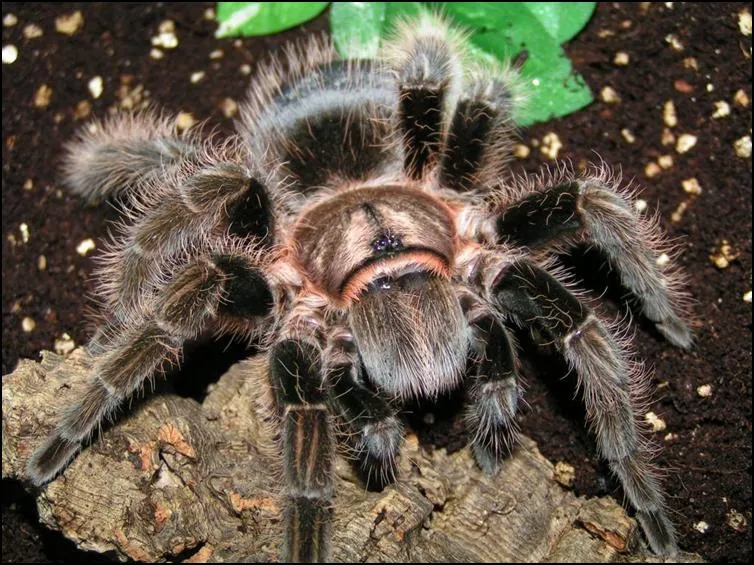The Curly Hair Tarantula (Tliltocatl albopilosus), native to the rainforests of Costa Rica, is a popular choice for beginner tarantula keepers. Their docile nature, striking appearance, and relatively simple care requirements make them appealing. However, like any pet, they require specific care to thrive. This guide provides the top 5 tips to ensure your Curly Hair Tarantula lives a long, healthy, and fulfilling life. Proper care not only ensures the well-being of your tarantula but also enhances your enjoyment as a pet owner.
Choosing the Right Enclosure
The enclosure is the foundation of your tarantula’s well-being. Selecting the appropriate habitat is critical for their health and comfort. A poorly designed enclosure can lead to stress, making them less likely to eat, and potentially causing other health problems. Consider the size, ventilation, and security features when choosing a habitat for your Curly Hair Tarantula. A well-chosen enclosure allows you to observe your pet and gives them ample space to exhibit natural behaviors.
Enclosure Size and Type
A good starting point is a 5-10 gallon terrarium for a juvenile Curly Hair Tarantula. As they grow, you will need to upgrade the enclosure. A mature adult will thrive in a 10-20 gallon terrarium or a similar-sized enclosure. The enclosure should be wider than it is tall, as these tarantulas are terrestrial and prefer ground space. Make sure the enclosure has a secure lid, as tarantulas are escape artists. Consider a front-opening terrarium for easier access and maintenance, particularly if you opt for a larger habitat.
Substrate and Habitat Setup
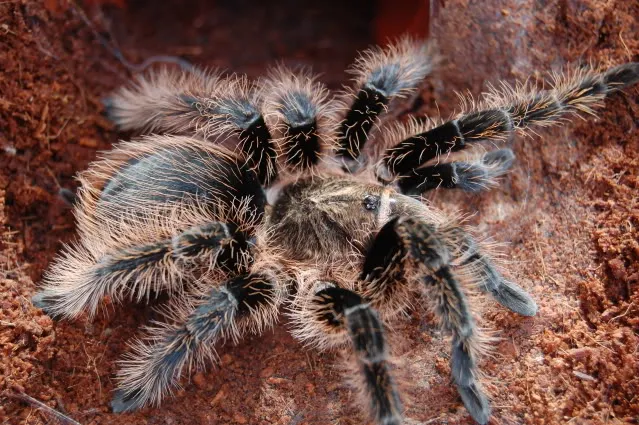
The substrate is the bedding material that covers the bottom of the enclosure. A good substrate should retain moisture and allow the tarantula to burrow if it desires. A mixture of coconut fiber, peat moss, and a small amount of vermiculite is ideal. This combination provides excellent moisture retention and allows your tarantula to create burrows. Provide at least 3-4 inches of substrate to allow for burrowing. You can also add a hide, such as a piece of cork bark or a half-log, to provide a secure retreat for your tarantula. The addition of a few fake plants can also enhance the enclosure aesthetics and offer additional security for your pet.
Maintaining Temperature and Humidity
Curly Hair Tarantulas thrive in temperatures between 75-85°F (24-29°C). You can maintain this temperature using a heat mat or a low-wattage heat lamp placed on one side of the enclosure. Avoid placing the heat source directly under the enclosure to prevent overheating. Humidity should be maintained between 60-70%. Use a hygrometer to monitor humidity levels accurately. Increase humidity by lightly misting the enclosure with water every few days, but avoid over-misting, which can lead to mold growth. Adequate ventilation is also crucial; ensure the enclosure has sufficient airflow to prevent the buildup of stagnant air and mold.
Feeding Your Curly Hair Tarantula
Proper nutrition is essential for the health and growth of your Curly Hair Tarantula. Understanding what to feed your tarantula and how often is crucial for providing optimal care. Overfeeding can be just as harmful as underfeeding, so it’s essential to strike a balance. Regularly observe your tarantula’s eating habits and adjust the feeding schedule accordingly. A well-fed tarantula is a healthy tarantula, and a healthy tarantula is a joy to watch.
What to Feed Your Tarantula
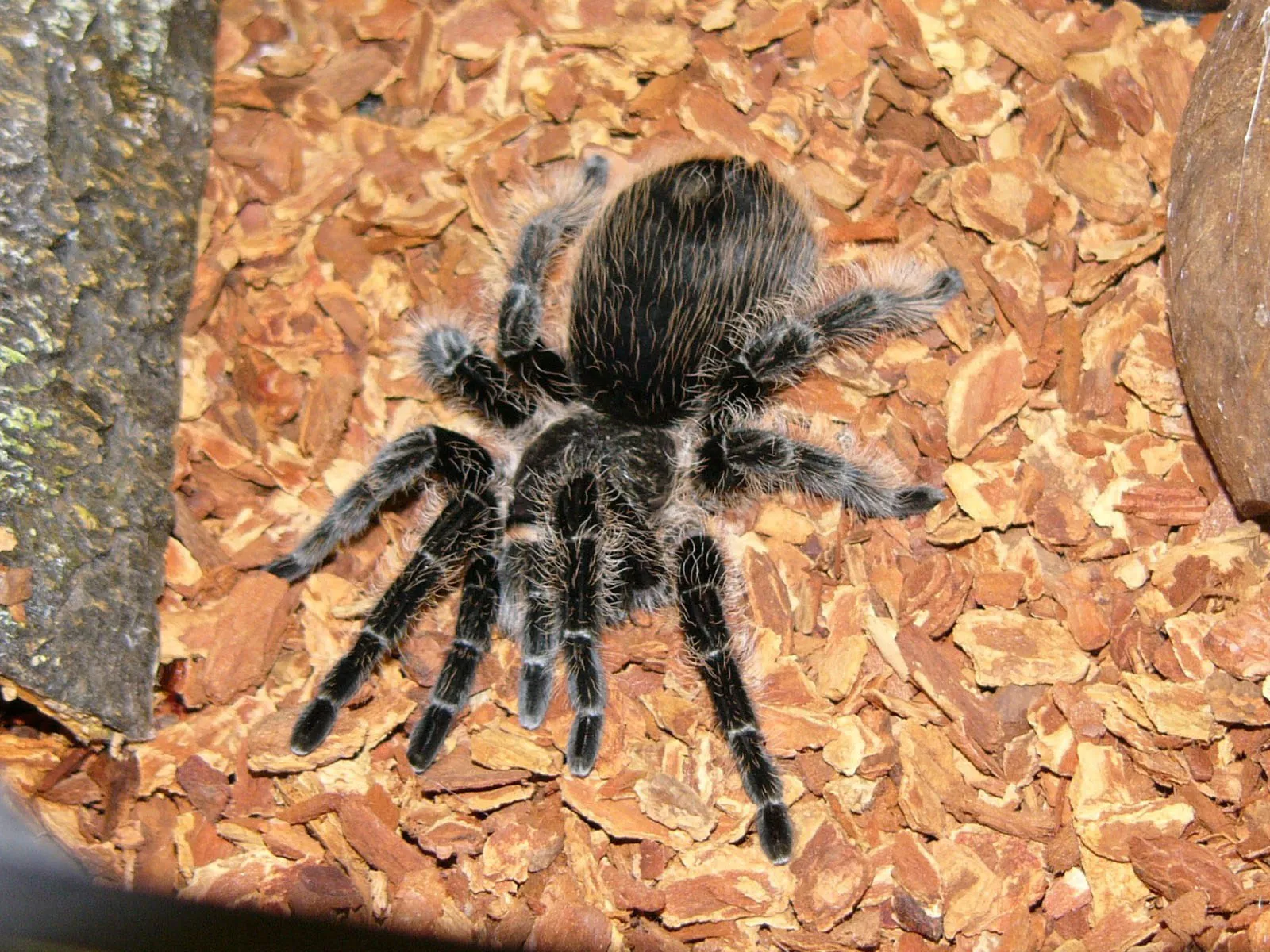
The primary diet for a Curly Hair Tarantula consists of insects. Good options include crickets, mealworms, dubia roaches, and appropriately sized earthworms. The size of the prey should be no larger than the tarantula’s body size. Variety is also essential, so provide a mix of insects to ensure they receive a range of nutrients. Before feeding, gut-load the insects with nutritious food to ensure your tarantula gets a balanced diet. Avoid feeding wild-caught insects, as they may contain parasites or pesticides.
Feeding Frequency and Portion Sizes
Juvenile tarantulas should be fed more frequently, typically two to three times a week. Adults can be fed less often, about once a week or every other week. Observe your tarantula’s abdomen to determine if it is well-fed. A plump abdomen indicates the tarantula is well-nourished. If the abdomen is too large, reduce the feeding frequency. Remove any uneaten prey within 24 hours to prevent stress and potential mold or mite infestations. Adjust the feeding schedule based on your tarantula’s appetite, growth stage, and molting cycle.
Watering and Hydration Needs
Providing fresh, clean water is crucial for the health of your Curly Hair Tarantula. Proper hydration supports their bodily functions and ensures they can thrive in their environment. Water is not just about drinking it; it also helps in molting and other essential biological processes. Ensuring a consistent water source reduces stress and helps maintain the overall well-being of your pet.
Providing Fresh Water
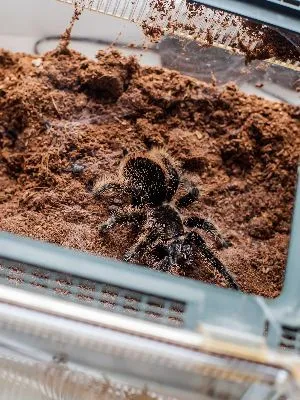
Always provide your tarantula with a shallow water dish filled with fresh, clean water. The water dish should be small enough that the tarantula can easily access it without the risk of drowning. Change the water at least twice a week or more frequently if it becomes soiled. Using a small, stable dish will minimize the risk of spills. Consider using a sponge or small pebbles in the water dish to provide a safe means of hydration for smaller tarantulas. Regular water changes are essential for hygiene and preventing the buildup of harmful bacteria.
Humidity Control and Misting
While a water dish provides a constant water source, you may also need to mist the enclosure occasionally to maintain proper humidity levels. The humidity level should be kept between 60-70%. Misting can be particularly helpful during the molting process. Use a spray bottle with distilled or dechlorinated water to mist the enclosure lightly. Avoid over-misting, which can saturate the substrate and lead to mold growth. Always monitor the humidity levels using a hygrometer, and adjust your misting frequency accordingly. Good ventilation is also essential to preventing mold and ensuring a healthy environment.
Handling and Interaction
Curly Hair Tarantulas are generally docile and can be handled, but handling is not a necessity and should be approached with caution. While many enjoy watching their tarantulas, unnecessary handling can stress them. Understanding when and how to handle them safely can protect both you and your tarantula. Always prioritize the tarantula’s well-being and safety when deciding to handle it.
When to Avoid Handling
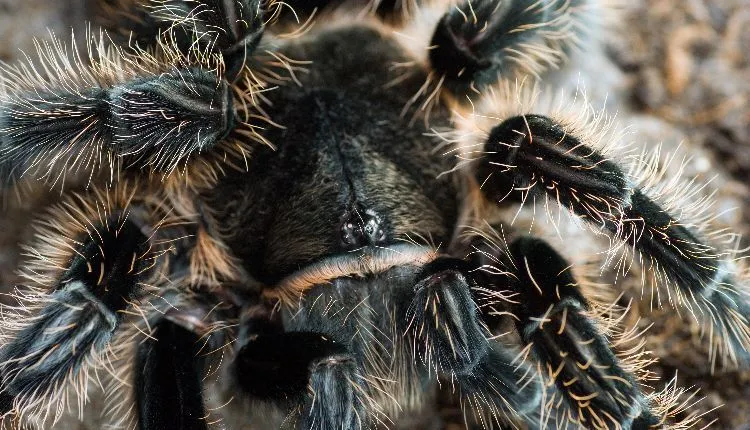
Avoid handling your tarantula under certain circumstances. Do not handle them during molting, as they are extremely vulnerable during this process. Also, refrain from handling if they show signs of stress, such as a defensive posture or fleeing. If they kick hairs or act defensively, it’s a clear sign they are not comfortable. Avoid handling newly acquired tarantulas, as they need time to acclimate to their new environment. Always wash your hands thoroughly before and after handling, and never handle your tarantula near your face.
Observing Your Tarantula’s Behavior
Spend time observing your tarantula’s behavior to understand its well-being. Observe their feeding habits, activity levels, and overall demeanor. Healthy tarantulas are typically active and alert. Recognize normal tarantula behaviors, such as burrowing and web-spinning, and learn to identify signs of stress or illness. Regular observation provides valuable insights into your tarantula’s health and allows you to detect any issues early on. Document any changes in their behavior to help identify potential problems.
Health and Common Issues
Even with proper care, Curly Hair Tarantulas can experience health issues. Understanding common problems and how to address them can help you keep your tarantula healthy. Recognizing early signs of illness and knowing what steps to take will ensure your tarantula receives the care it needs. A watchful eye and quick action can make a big difference in their lifespan and quality of life.
Recognizing Molting Signs
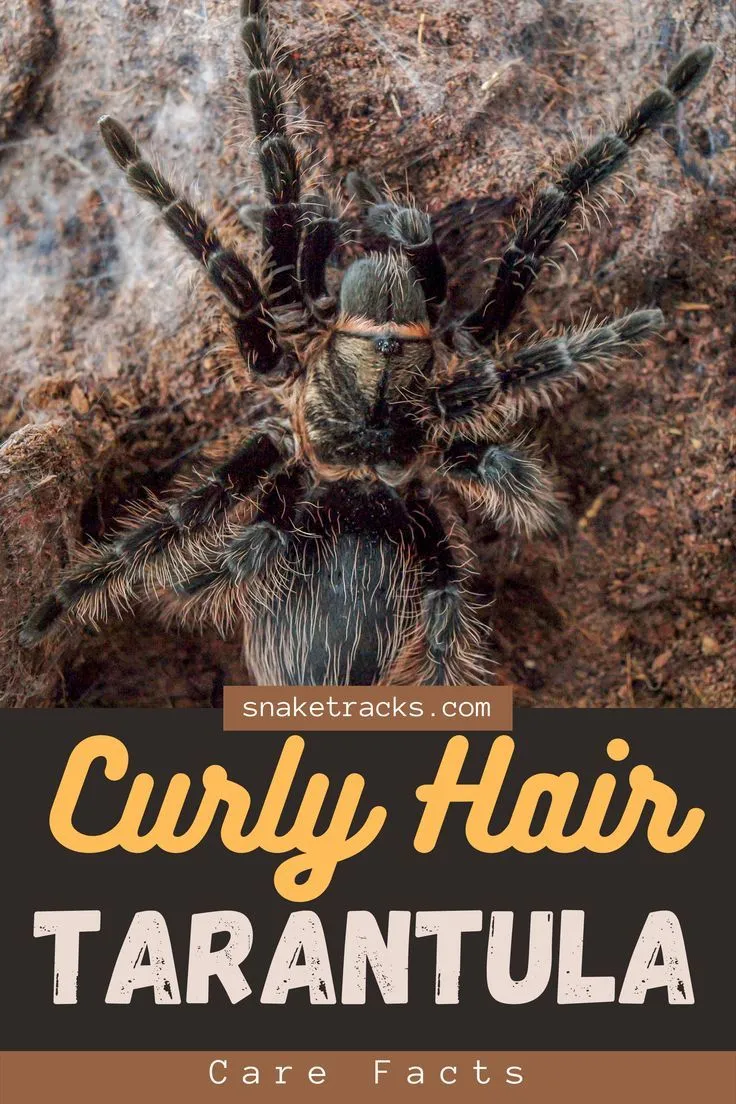
Molting is a natural process where tarantulas shed their exoskeleton to grow. Signs of an upcoming molt include a loss of appetite, sluggishness, and a darkening of the abdomen. They may also spend more time hiding. Avoid disturbing your tarantula during this vulnerable period. Provide plenty of water and maintain proper humidity levels. After molting, give the tarantula a few days to regain its appetite before feeding it. The molted exoskeleton should be removed to prevent mold or bacterial growth, but wait until the tarantula has fully hardened.
Identifying and Addressing Health Problems
Common health issues include mite infestations, fungal infections, and injuries. Mites can be identified by small, moving specks. Fungal infections may appear as discoloration or lesions. Injuries can occur from falls or during handling. If you suspect a health problem, consult with a veterinarian experienced with exotic pets. Maintain a clean enclosure and practice good hygiene to prevent many health issues. Quarantine any new tarantulas before introducing them to established enclosures. Prompt action and veterinary care are essential for addressing serious health problems.
Regular Enclosure Cleaning and Maintenance
Maintaining a clean enclosure is essential for preventing disease and ensuring your Curly Hair Tarantula’s well-being. Regular cleaning and maintenance should be part of your care routine. A clean environment prevents the buildup of harmful bacteria and keeps your tarantula healthy. Cleaning your tarantula’s home consistently will improve their quality of life, and reduces the risk of potential health issues.
In conclusion, providing the right care for a Curly Hair Tarantula is not difficult, but it does require dedication and attention to detail. By following these top 5 tips – choosing the right enclosure, proper feeding and watering, understanding handling and interaction, recognizing molting signs and health issues, and maintaining a clean environment – you can create a happy and healthy home for your pet. With proper care, your Curly Hair Tarantula can thrive and bring you years of enjoyment.
